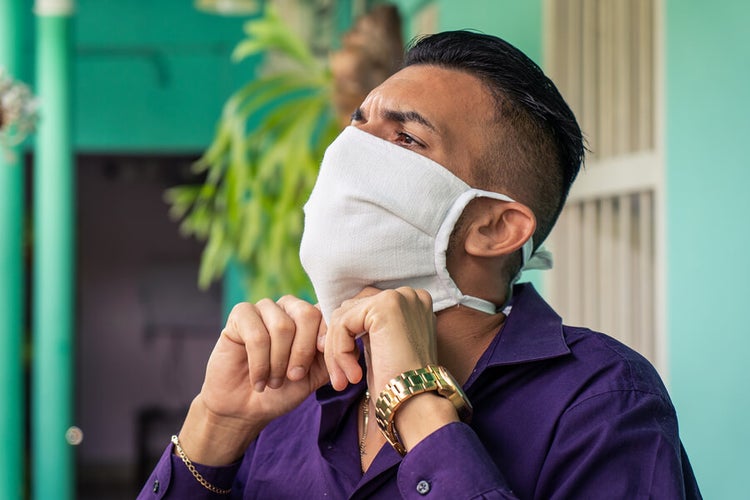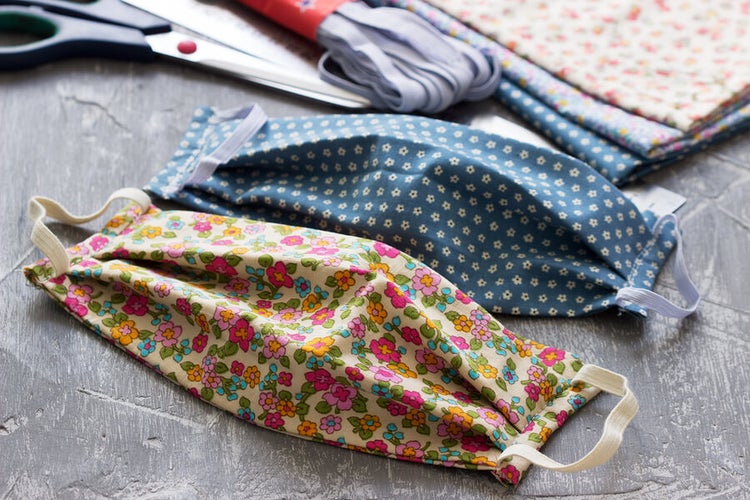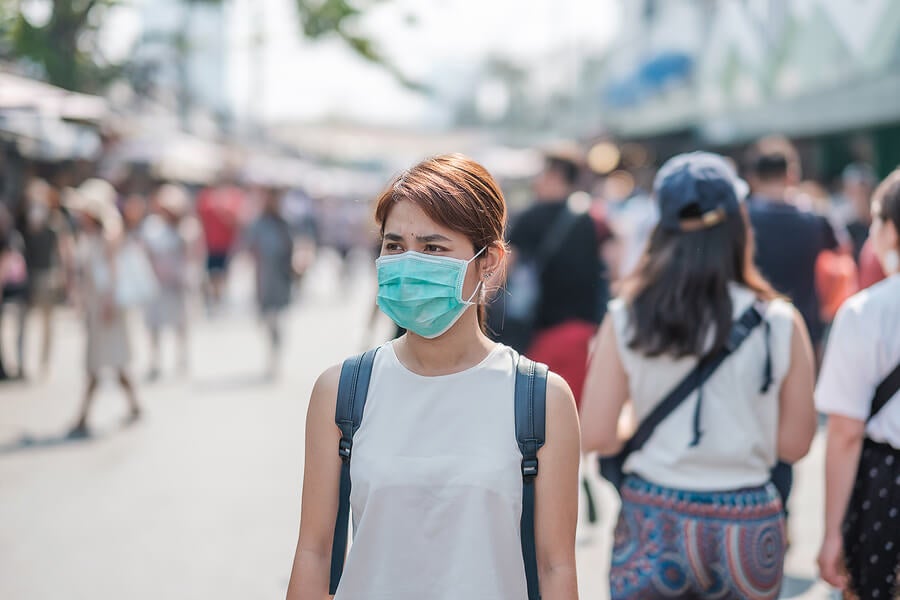Common mistakes when using cloth masks

Cloth masks have been recommended to the population in recent weeks as a measure to delay the spread of the coronavirus (COVID-19). However, many have fallen into certain errors when using them. Discover them!
Entities such as the Centers for Disease Control and Prevention and the World Health Organization have been warning that some people are making mistakes when using cloth masks. While these elements appear to help slow the spread of COVID-19, misuse weakens their usefulness.
In recent days, it has been advising that everyone wear these masks, especially when making essential outings to public places, such as a grocery store or pharmacies. Although they are not enough to prevent the spread, they are believed to help prevent the spread if an asymptomatic person does not know they are carrying the virus.
However, as the aforementioned entities comment, it is essential to know how to use them and, above all, to avoid errors that may reduce their effectiveness. How to recognize them? In this opportunity we want to detail the most frequent so that everyone begins to avoid them from now on.
Mistakes when using cloth masks
The cloth masks can be made with different materials such as anti-fluid or cotton fabrics. However, this last fabric is the most recommended, since it is not usually aggressive for the skin and fixes well on the face. In any case, regardless of the material, the most important thing is to avoid making mistakes when using cloth masks.
1. Assume they are suitable for everyone
A common mistake about using cloth masks is thinking that they are suitable for everyone, without exception. Well, in one of their recent publications, the Centers for Disease Control and Prevention warn that there are cases in which these covers should be avoided. These include:
- Children under 2 years old.
- People with respiratory problems.
- Patients in a state of unconsciousness.

In some cases, such as children under the age of 2 and patients with respiratory problems, it is best to avoid cloth masks.
2. Believe they provide medical-grade protection
Although the evidence is inconclusive and the topic is still debated, it is suggested that wearing a cloth mask may help reduce the spread of COVID-19 , especially considering that there are people who do not have symptoms and continue with their normal lives.
Despite this, the CDC and other health authorities emphasize that their use is an insufficient measure to avoid infection and, furthermore, it is not correct to think that they provide the same protection as a surgical mask or N95 respirators, reserved for the health personnel.
3. Stop washing your hands and reduce social distancing
Precisely, because these masks are insufficient to avoid contagion, it is necessary to maintain measures such as constant hand washing and social distancing . It is a mistake to think that the mere fact of using this element already protects without further ado.
Keeping hands clean remains one of the main preventive measures. In addition, it is convenient to keep at least 2 meters away from other people when living in environments such as supermarkets, pharmacies and the like.
4. Cover only your mouth
It is certainly one of the most common mistakes when using cloth masks. We see how people, perhaps for comfort, cover only their mouths and expose their noses. It doesn’t work like that!
It is essential to protect, to the extent possible, the airways. Therefore, at all times, cloth or medical masks must cover the nose and mouth. Remember that these are the main ways of contagion of COVID-19.

5. Do not wash the cloth masks after using them
Although it is not necessary to discard the cloth masks, it is essential to wash them well after each use. Although at first glance they appear clean, it is a mistake to use them several times in a row without first washing them.
The CDC notes that simply introducing them to a washing cycle in a washing machine is enough to make them ready for new use. Of course, they can also be washed by hand with soap and water . The best thing about these masks is that washing does not make them lose their shape, so they last a long time.
6. Do not wash your hands before and after using the masks
Although we have already mentioned that it is important to maintain constant hand washing, it should be noted that hand hygiene must be repeated before and after touching the mask. Let us remember that this element is not exempt from containing pathogens, like hands, so hygiene is essential.
When not in use, the ideal is to store the masks in a clean bag , preferably the resealable ones, or in a clean, breathable container.
Mistakes when using cloth masks: what should be clear?
Making mistakes when using cloth masks reduces their effectiveness as a preventive measure against COVID-19. Therefore, if we are committing them, it is better to correct them as soon as possible. In addition, we cannot ignore other prevention habits, such as washing our hands well, maintaining social distance and respecting confinement.







